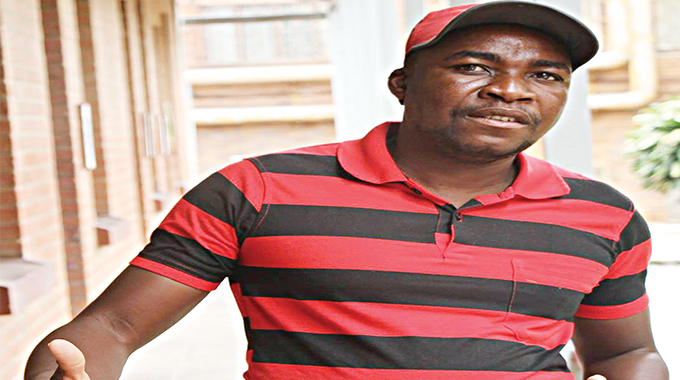Letters to the editor: How to keep cholera and typhoid at bay in the post Cyclone Idai period
Dr Walter Chingwaru, Correspondent
Last week, Government started rolling out mass cholera vaccination in Chimanimani and Chipinge.
The oral cholera vaccine (OCV) campaign targeting some 487 825 people began last Tuesday in Zimbabwe in the two districts most affected by Cyclone Idai.
During the campaign all residents of Chimanimani and Chipinge districts aged 12 months and older will receive the vaccine to protect them against cholera.
While there have been no reported cases of cholera in the cyclone-affected areas in Zimbabwe, the Zimbabwe Ministry of Health and Child Care launched the campaign, with support from UNICEF and the World Health Organisation (WHO), as a proactive, preventative measure.
The vaccinations are most welcome as they came at the right time.
When Cyclone Idai destroyed homes and water infrastructure that includes pipes in Chimanimani, as biomedical scientists, we were anxious about these events because we knew diseases would follow.
Standing water and poor drainage would give rise to diarrhoea and malaria. Many survivors, especially in Mozambique, had spent days on roof tops and higher ground without safe food and water — with no assistance in sight.
Stress, thirst, starvation and lack of shelter and medicine stymied their ability to fight off diseases. The index case of cholera was confirmed in Mozambique on March 28– exactly two weeks after Cyclone Idai’s landfall.
With natural disasters such as this, infections quickly become a major public health threat. Cholera is a severe intestinal infection that is caused by strains of the bacterium Vibrio cholerae. Symptoms and signs of cholera can range from asymptomatic carriage to severe diarrhoea, vomiting, and profound shock.
Specifically, cholera presents the following symptoms: watery diarrhoea (sometimes in large volumes), rice-water stools, fishy odour to stools, vomiting, rapid heart rate, loss of skin elasticity, dry mucous membranes (resulting in dry mouth!) and low blood pressure.
Untreated cholera is fatal in approximately 25 percent of cases, but with aggressive volume and electrolyte replacement, the number of persons who die of cholera is limited to 1 percent.
Typhoid is also a severe systemic illness caused by infection with Salmonella enteric serotype Typhi. Symptoms of typhoid include poor appetite, abdominal pain and peritonitis, headaches, generalised aches and pains, high fever, often up to 40oC, lack of energy and enthusiasm (lethargy), intestinal bleeding or perforation and diarrhoea or constipation.
Among all forms of diarrhoea, cholera and typhoid often have the worst outcomes — characterised by high mortality and morbidity. Other forms of diarrhoea are caused by other microorganisms including other bacteria such as Escherichia coli, Campylobacter jejuni, Clostridium difficile, and Shigella species, viruses such as rotavirus and norovirus as well as parasites such as Giardia lamblia and Entamoeba histolytica.
As a rule, diarrhoea spreads by ingesting contaminated food and drink, mainly contaminated water. Cyclone Idai literally destroyed most infrastructure that lay in its path — human and animal lives, houses, bridges as well as water supply infrastructure (water pipes, water reservoirs, dams, wells and so forth).
Many victims spent days without accessing safe water supplies. Naturally, victims had to resort to drinking the flood waters.
Major news channels also aired videos of children playing in the flood waters. The children were likely unaware of the microscopic dangers lurking in the waters. Being children, all they wanted was to have fun– even during a crisis. That is their natural right.
Unfortunately, the same waters were strewn with bodies of humans and animals, as well as sewage from the destroyed sewerage systems.
Moreover, families and individuals must be sure to drink certified quality water and to sanitise water from open sources. Sanitisation of drinking water (getting rid of the infectious agents) can be achieved through boiling or adding sanitising chemicals — such as chlorine — into the water prior to drinking it. All foods must be well cooked and consumed immediately after preparation. These are the known methods to prevent the spread of diarrhoea.
With any substantial natural disaster, no matter the nation, the help and support of the international community is vital.
Humanitarian aid has begun to arrive from the international donor community and well-wishers into the affected countries, including helicopters, food stuffs, clothes, money and even sniffer dogs from South Africa.
As part of the holistic response, there is need to ensure, besides the provision of safe food and drink, the availability of medical facilities, medicines including antibiotics such as ciprofloxacin (for non-pregnant adults) and ceftriaxone against typhoid; tetracycline, doxycycline, furazolidone, or ciprofloxacin against cholera; as well as fluids to reduce dehydration is a must within the affected areas.
-Dr. Walter Chingwaru is a biomedical scientist and current chairperson of Biological Sciences at Bindura University of Science Education. His research interests span the areas of microbiology and pharmacognosy, with an ardent interest in public health issues. You can connect with him via: Twitter – @walterchingwaru, email: [email protected], or phone: +263713669091.











Comments